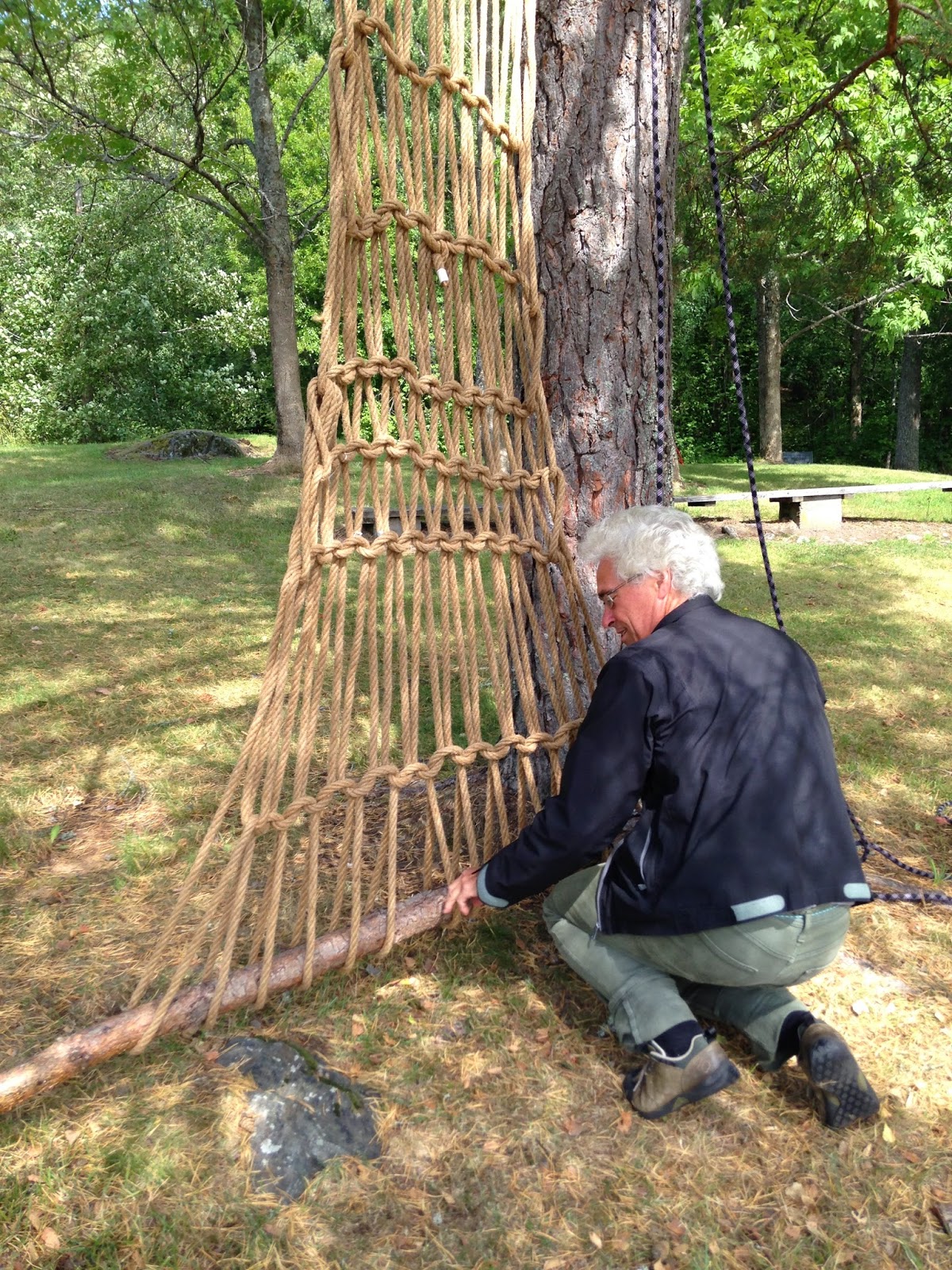Performing, making and body-based intra-action in the concept of happy knitting

August 12, 2014:
Exploring the boundaries of knitting as an embodied making activity.
At Tuesday 12th August three group members: Astrid Hus, Geir Grimeland and Marte S. Gulliksen staged a performance where we explored:
– knitting as a social or intra-action activity in a group
– knitting as a full-body experience/inter-body experience (expanding the phenomenological self-experience to a we-experience)
– knitting as a transdisciplinary performance in the intersection between
outdoor-life, climbing, nature experience, craft, beauty of the hoops,
etc.
– knitting as a process, where the act of knitting was in the core and the knit were unraveled at the end of the performance.
Experience
Our experience of this performance was exhilarating. The physical experience of being bodies interacting with the three, the hemp-rope, each other, needing to use all six hands to be able to knit gave a sense of being-there which transcended the boundaries of a personal self a single mind-body-interaction. We depended on each other, not only to knit, but to provide safety for the climber(s), and to develop the novel (to us at least) way of making the first row in the knit around the branch. The climb in the knit was made possible only by trusting the persons holding the log in the last row in the knit steadily to the ground (at this point the three Heads of Department at the Faculty were present to observe the performance).
Plans for the future
This performance will be explored theoretically and with subsequent
performances throughout the academic year 2014-2015. We appreciate constructive comments and suggestions for developing the performance further. Please comment or contact us if you want to
contribute.
Background
This performance is a small burst of energy based on our professional backgrounds in climbing and outdoor life (Grimeland), textile education (Huus) and craft education/research (Gulliksen). We have followed the scene of performative knitting for a while, as for example Circus Circör’s Knitting Peace, and similar activities. To us these instances are strikingly far away from what knitting is associated with by our colleagues in other departments and friends/family. This more common understanding of knitting is linked to knitting as a craft.
The craft of knitting
The craft of knitting is a form of embodied making known to many people. Its purpose has changed during history from being a necessity for producing clothing to becoming a recreational hobby. As a hobby it has swung from being popular to not-popular, and it has been a hefty debate whether this particular form of making should be a part of the schools’ curricula. Recent research has emphasized its beneficial effects, as for example the well spread article of Riley, Corkhill & Morris in the February issue of British journal of Occupational Therapy. They conclude that knitting has “psychological and social benefits, which can contribute to wellbeing and quality of life. As a skilled and creative occupation, it has
therapeutic potential”
However, research as this, and also the common experience and lore of knitting often view knitting as:
– an individual activity (the sole person knitting in her usual pace, even though knitting circles are increasingly more common, at least according to certain modern novels and various knitting guerrilla groups)
– involving only the smaller muscles in the fingers/arms (even though history tells us herders used to knit while walking minding their cows).
– a process, where the knitted result is the important end-result (a finished scarf), not the performative aspect of the process.
We intend, in our further studies, to continue to explore and expand the boundaries of knitting further, to expand on current knowledge, common experience and lore of knitting. And, of course, to have fun with knitting…